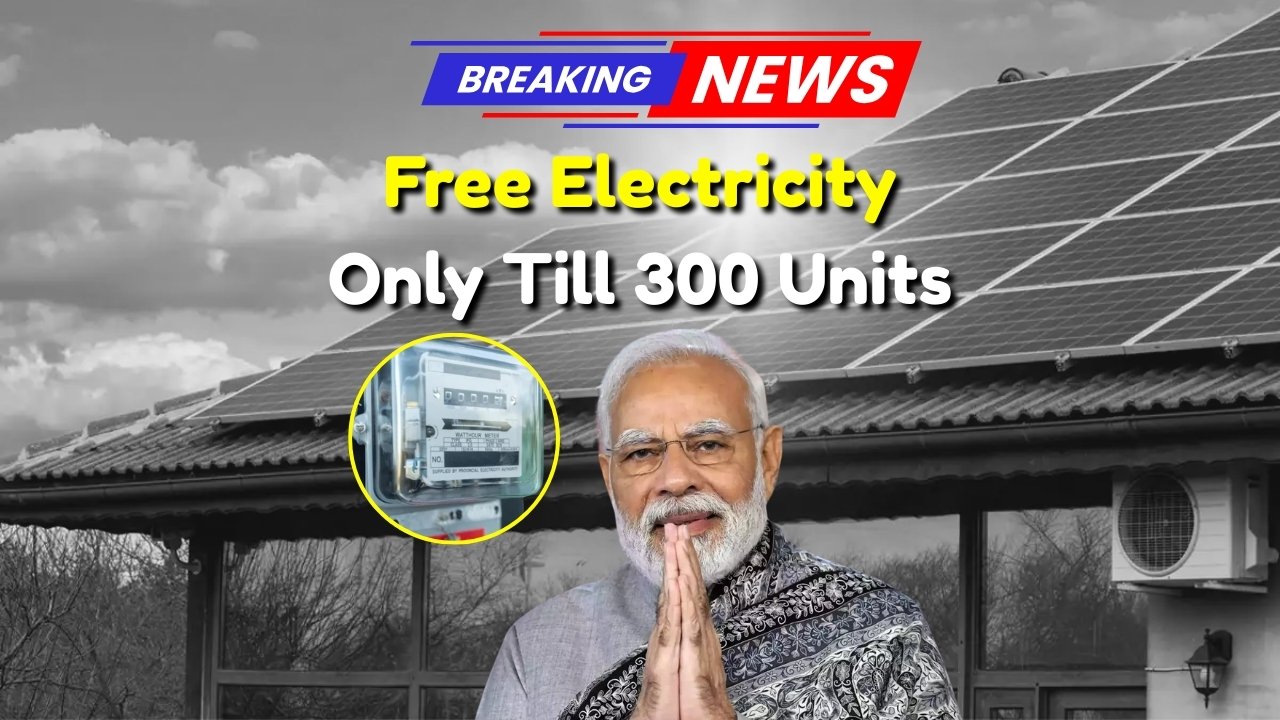Electricity Subsidy Update : In a major update to the electricity subsidy policy, the government has announced that relief will now be limited to the first 300 units of power consumed per household. Consumers who exceed this cap will have to pay according to the new electricity tariff slabs, which are set to roll out soon. The move comes as part of cost-cutting reforms aimed at reducing the burden on the state while ensuring benefits are directed at low and middle-income households.
What Is the Electricity Subsidy Update?
The revised subsidy system limits the benefit to only those consuming up to 300 units of electricity per month. If a household uses more than 300 units, the entire bill or excess units will be charged at the newly proposed rates without subsidy.
Key Changes:
- Subsidy applicable only for up to 300 units.
- New tariff structure introduced for consumption beyond 300 units.
- Households must link subsidy benefits with updated consumer details.
- New electricity bills reflecting these changes will be issued shortly.
Why Was the Subsidy Limited to 300 Units?
The government has stated that the decision is rooted in better targeting of subsidies. Previously, even high-consuming households were getting blanket subsidies, which led to a financial strain on state power boards. The 300-unit cap is seen as a balanced approach that continues to help the needy while discouraging excessive consumption.
Objectives of the New Rule:
- To ensure financial sustainability of power utilities.
- To encourage energy conservation.
- To provide targeted relief to economically weaker sections.
- To stop misuse of subsidy by high-usage consumers.
Updated Tariff Slabs Post Subsidy Cap
The new tariff slabs are designed to recover actual power costs while rewarding efficient energy usage. The electricity bills will now vary significantly based on monthly consumption.
Sample Tariff Table Before and After Subsidy Limit:
| Units Consumed | Old Rate Per Unit | Subsidized Bill (Old) | New Rate Per Unit | New Bill Without Subsidy |
|---|---|---|---|---|
| 0-100 | ₹1.50 | ₹150 | ₹2.00 | ₹200 |
| 101-200 | ₹2.00 | ₹200 | ₹3.00 | ₹300 |
| 201-300 | ₹3.00 | ₹300 | ₹4.00 | ₹400 |
| 301-400 | ₹4.50 | ₹450 | ₹5.50 | ₹550 |
| 401-500 | ₹5.00 | ₹500 | ₹6.50 | ₹650 |
| 501-600 | ₹6.00 | ₹600 | ₹7.00 | ₹700 |
| 601-800 | ₹6.50 | ₹650 | ₹8.00 | ₹800 |
| 801+ | ₹7.00 | ₹700 | ₹9.00 | ₹900 |
Note: These rates are indicative and may vary state-wise.
Who Will Be Most Affected by the Change?
Households consuming over 300 units regularly will feel the pinch the most. This includes:
- Middle to high-income urban families.
- Homes with multiple appliances and air conditioners.
- Businesses and commercial establishments running on domestic meters.
On the other hand, small families, rural households, and economically weaker sections who consume less electricity will continue receiving the subsidy.
Steps to Continue Receiving Subsidy
To continue availing the subsidy benefits for up to 300 units, users must:
- Ensure their electricity connections are updated with Aadhaar or other verified identification.
- Use official electricity board websites to apply for subsidy linkage if required.
- Maintain monthly usage within the subsidized 300-unit cap.
- Avoid misuse of domestic connections for commercial purposes.
Government’s Official Statement
Authorities emphasized the need for efficient energy use and proper targeting of benefits. They stated that:
“This change is not about reducing support but about ensuring the right people get it. Excess usage will no longer be rewarded with public funds.”
How to Check If You Are Eligible for Subsidy
Consumers can verify their eligibility and updated bill status by visiting their state electricity board’s official portal or customer service centers. Many boards also offer mobile apps to track:
- Monthly usage
- Subsidy applied
- Real-time bill generation
Conclusion of Electricity Subsidy Update
The electricity subsidy reform limiting relief to 300 units marks a major shift in India’s power subsidy policy. While the move will lead to higher bills for high-usage households, it is designed to streamline subsidies for those who need them the most and promote responsible energy consumption. As new bills are issued soon under the revised slabs, consumers are advised to monitor their consumption closely and take proactive steps to remain within the subsidized limit.
